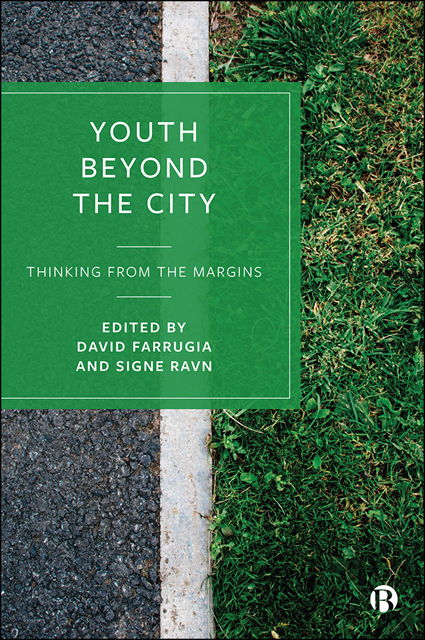Book contents
- Frontmatter
- Contents
- List of Figures and Tables
- Notes on Contributors
- Introduction: Thinking from the Margins
- Part I Inequalities: Education and Aspiration on the Margins
- Part II Materialities: Spatiality and Sensory Embodiment
- Part III Identities: Mobility, Rootedness and Belonging
- Part IV Temporalities: Historicizing Space and Place
- Index
7 - Thinking beyond the Neighbourhood and National Territory: Exploring Central American Migration from a Mobilities Perspective
Published online by Cambridge University Press: 13 October 2022
- Frontmatter
- Contents
- List of Figures and Tables
- Notes on Contributors
- Introduction: Thinking from the Margins
- Part I Inequalities: Education and Aspiration on the Margins
- Part II Materialities: Spatiality and Sensory Embodiment
- Part III Identities: Mobility, Rootedness and Belonging
- Part IV Temporalities: Historicizing Space and Place
- Index
Summary
Introduction
Central American migrants have garnered attention from the media, human rights organizations and scholars in recent years. Thousands of men, women and children, named the ‘migrant caravans’, fleeing El Salvador and/ or Honduras to the US have headlined mainstream newspapers such as the New York Times, the Guardian and the Washington Post. Human rights organizations’ reports have looked at the reasons why many Central Americans are fleeing their home countries (UNHCR, 2015a 2015b; Amnesty International, 2016; Doctors without Borders, 2018). Both the media and human rights organizations name the massive migration of Central Americans a humanitarian crisis.
Scholars have started to explore the subject. Anthropologists and sociologists have pointed out that Central American migration to the US, the main country of destination, is not new (Bibler Coutin, 2000; Menjivar and Abrego, 2012; Menjivar, 2013). Nevertheless, in recent years, the region has witnessed considerable change in its migration patterns which includes massive movements to the US, forced internal displacement in home countries, and forced movement of Central Americans to their home countries through deportations (Blanchard et al, 2011; Burt et al, 2016). Scholars have pointed out that poverty, exclusion and, more recently, violence and crime by gangs and criminal groups are some of the reasons why low-income Central Americans mainly from El Salvador, Honduras and Guatemala are leaving their home countries (Cantor, 2014; Chapelle Deckert, 2016). When exploring violence and crime and its connection to migration, studies focus mainly on Central Americans’ journey to the US (Vogt, 2013; Brigden, 2018; Frank-Vitale, 2020). Some scholars have looked at violence and crime in their home countries, arguing that institutional change that excludes youth, neoliberal economic policies and state violence, and US– Central America relations (Green, 2011; Rodriguez et al, 2019) are all factors that produce migration and displacement. However, with the exception of Frank-Vitale (2021), Berg and Carranza (2018) and Clark et al (2008), how Central Americans’ experience with violence by criminal groups affects their movements and/ or non-movements within the neighbourhood and beyond is poorly understood.
- Type
- Chapter
- Information
- Youth beyond the CityThinking from the Margins, pp. 137 - 155Publisher: Bristol University PressPrint publication year: 2022

